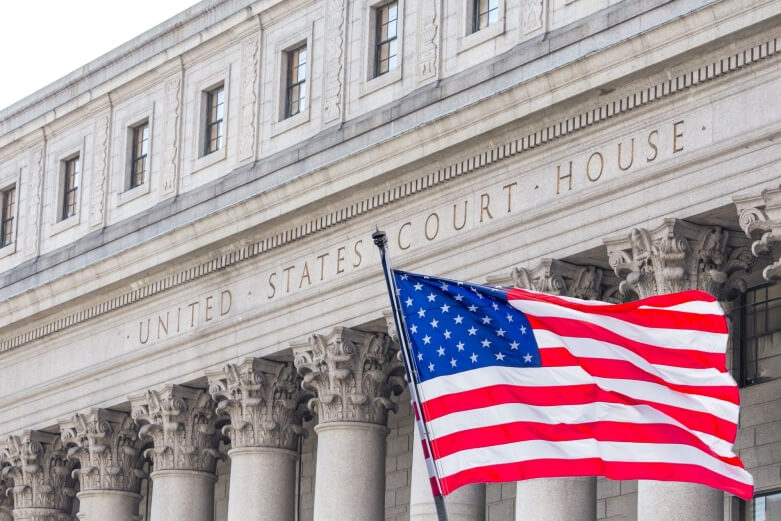The State of U.S. Federal Courts
Page Media

This fall marks 20 years since Justice John Roberts became the Chief Justice of the U.S. Supreme Court. Over the last few decades, federal courts have transformed from the forum that vindicates civil rights to one that frequently undermines them. That trend has accelerated in the last few years and has been turbo-charged since the Trump Administration took office.
While the ACLU will continue to advocate in federal courts, we also need to recognize that the ground on which we do that work has shifted.
In the decades following the Warren Court’s expansive decisions around constitutional rights, federal courts gradually began to erect barriers to plaintiffs bringing civil rights cases in federal court. Specifically, in the late 1900s, federal courts embraced procedural doctrines that often prevented plaintiffs from even reaching the merits of their claims. Exhaustion requirements, heightened pleading standards, abstention doctrines, and jurisdictional traps proliferated. These were classic “gatekeeping” rules: rights remained on the books, but courts ensured that fewer and fewer plaintiffs could enforce them.
Over time, the courts have not been content to police the courthouse doors. In the last two decades, the Supreme Court has turned its attention to the very substance of federal constitutional and statutory protections, dramatically narrowing the scope of the rights themselves. In Shelby County v. Holder, the Court gutted the Voting Rights Act’s preclearance regime, effectively dismantling one of the most important civil rights protections of the twentieth century. In Dobbs v. Jackson Women’s Health Organization, the Court overturned Roe v. Wade, eliminating constitutional protection for abortion. In Students for Fair Admissions v. Harvard, the Court struck down race-conscious admissions programs, dismantling decades of affirmative action precedent and restricting universities’ ability to remedy entrenched racial inequality. What began as procedural narrowing has now become substantive contraction.
Currently, the Court is effectuating the narrowing of constitutional rights not through reasoned opinions after briefing and argument, but through the shadow docket — opaque emergency orders that undo lower court rulings and permit unlawful government action to go forward. On the shadow docket, the Court has lifted injunctions ordered by the lower courts and allowed the Trump administration to continue to carry out and enforce challenged executive orders and actions — even as constitutional challenges to these acts remain pending. Through these short emergency orders, the Court is not deciding or even opining upon whether these contested executive orders and actions are lawful — it is simply permitting these actions to take effect while the litigation drags on. The result is the Court is effectively enabling people to be harassed, silenced, deported, denied healthcare, or even denied citizenship pursuant to gross executive overreach that will likely later prove unlawful or unconstitutional.
Once a minor feature of the Court’s practice, the shadow docket now routinely handles the most divisive issues of the day. In Trump’s first five months back in office, the Solicitor General filed nineteen emergency applications — more than the Department of Justice filed in the entire Obama presidency. By June 2025, the Court had granted relief in ten of twelve decided cases, including stays allowing mass federal layoffs and the deportation of Venezuelan migrants under the Alien Enemies Act. These decisions were issued without oral argument, often in a single paragraph, and had immediate nationwide consequences. Justice Ketanji Brown Jackson has been the sharpest critic of this practice. In her dissents from shadow docket orders, she has cautioned that the Court’s “hair-trigger use” of emergency relief denies affected communities any meaningful judicial review.
The through-line across these eras is striking. First, the Court erected procedural hurdles to make it difficult to enforce civil rights in federal court. Then, it began contracting the rights themselves, hollowing out the Voting Rights Act, reproductive freedom, and race-conscious admissions. Now, it uses the shadow docket to allow policies that infringe on what is left of that constitutional core to take effect immediately, without full brief and with no explanation. Each step marks a deeper retreat from the judiciary’s traditional role as a check on unlawful government action.
But we will continue to fight. In the midst of all of this, individuals at all levels of institutions have courageously and publicly called out what is happening. Many, many district court judges, including those appointed by Republican presidents, have continued to evaluate cases and reach the best possible conclusions without regard for political or professional fallout. Many have stated publicly their frustration at the trajectory of the federal courts.
And here at the ACLU, we are doing what we have always done — we are assessing the landscape, pivoting our strategies, and figuring out how to continue to fight. When the Supreme Court struck down the nationwide injunction against Trump’s birthright citizenship order, the ACLU the same day filed a motion to certify a nationwide class and eventually got a judicial order granting that motion and pausing the executive order. When it was clear that we couldn’t get a strong preliminary injunction in one of our deportation raids cases without triggering the ire of the Supreme Court, we asked instead of expedited discovery to get to a faster resolution on the merits. As the Supreme Court makes it harder to file large impact cases on behalf of detained immigrants, we have begun filing individual habeas petitions that can have widespread effects.
Of course, there is much work that remains in assessing how we will continue to have the largest impact we can through the courts. But rest assured that we are up to the task and prepared to meet the moment.
